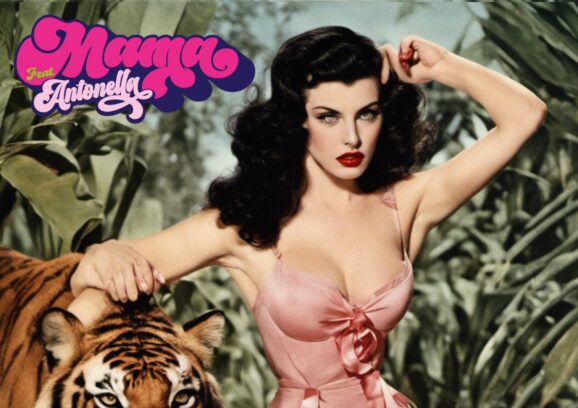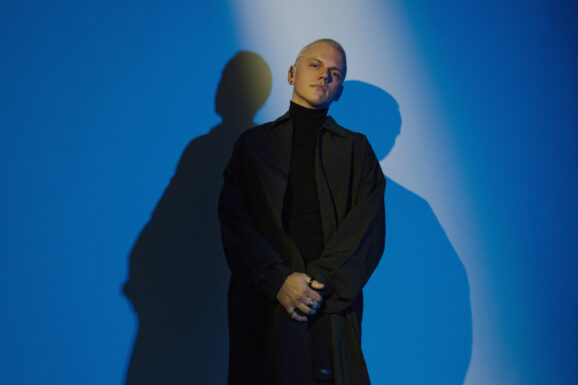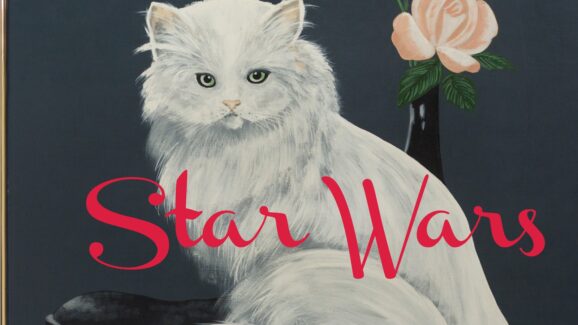Intentional or not, the cover images for Poco’s Crazy Eyes (released 9/15/73) were prescient indeed. On the front, a group portrait catches a somber quintet shrouded in shadows, while the back cover finds the group all smiles–with the exception of Richie Furay, whose forced grin seems more like a grimace.
Not altogether surprisingly then, the co-founder of Poco (with guitarist/songwriter/producer Jim Messina) would depart mere days prior to the release of the country-rock pioneers’ fifth album. His exit was the cumulative effect of continuously disappointing commercial response to prior releases, including the previous year’s much-touted A Good Feelin’ to Know.
As a result, Furay became increasingly discouraged with the quintet’s prospects, especially since ex-bandmates were so successful with their own respective groups. Former Buffalo Springfielders Stephen Stills and Neil Young found fame with David Crosby and Graham Nash, while Randy Meisner left early in Poco’s evolution to join the Eagles and Messina’s collaboration with Kenny Loggins garnered no small popularity.
This second Jack Richardson production for Poco might’ve been a mirror image of the previous record. Accurately describing the sound of the group, Bud Scoppa opened his Rolling Stone review describing Poco playing live ‘with the torque of a country-tuned Derek and the Dominos’. But whereas the group was channeling high spirits in 1972, they had to work to muster them up a year later.
Perhaps that’s why the band returned to country/bluegrass roots at the very outset of Crazy Eyes. Effectively the instrumental coda to Paul Cotton’s “Blue Water,” multi-instrumentalist Rusty Young’s “Fool’s Gold” is a gateway to a deceptively forlorn song of Timothy B. Schmit rightfully titled “Here We Go Again.” It’s thus a dual introduction to the record’s underlying theme of expectations denied and anticipation gone sour.
The near ten-minute production of the title song, one of only two Furay originals on the LP, is ostensibly a tribute to Gram Parsons (on whose “Brass Buttons,” from the latter’s posthumous Grievous Angel, Richie would also sing lead). Given the long-term history, retrospect also compels interpretation in relation to the author’s relationship with Neil Young, especially as the lavish production recalls “In The Hour of Not Quite Rain,” from the aforementioned mythic quintet’s Last Time Around.
Similarly lush string and horn arrangements also adorn a cover of J.J. Cale’s “Magnolia.” Significantly, this inclusion posits guitarist/vocalist/composer Paul Cotton as the newfound linchpin of Poco, a position to which he’d progressed in the three years since he’d been recruited in the wake of Messina’s departure. And fully in keeping with what was predominant in the prior effort (and permeated the next), the former member of the Illinois Speed Press also contributed the rollicking “A Right Along.”
The electric guitars dueling with Young’s effects-laden pedal steel radiates the positivism, if not exactly the natural effervescence, of vintage Poco, plus the edge the band developed in the later years of Furay’s tenure. On the surface, the ominous air of the Bob Ezrin/Alan MacMillan co-arrangement of “Crazy Eyes” is its mirror image, just as it’s also the flip side of the concluding cut “Let’s Dance Tonight.”
Except that the latter number of Richie’s sounds slightly forced. Plus, its placement as the final track of the eight, sequencing gone awry, only enhances that impression. As a means of setting a more constructive transitional tone for the long player, the inherently expectant air of the song might better have been placed at the opening in this nearly thirty-eight-minute playing time.
Ultimately, that latter selection and its somewhat stilted performance is the work of a band as fragmented as its album. Still, it’s a valiant attempt to summon up the heart and soul that made Poco the object of rabid devotion to its relatively small demographic. Their following continued apace just like the band itself in the wake of the co-founder’s departure (to work in the contrived short-live triumvirate that was The Souther-Hillman-Furay band).
Seven found a four-man Poco playing with unfettered abandon. And, as the ensemble reconfigured itself further, as on 1975’s Head Over Heels, the songwriting contributions of Young came to the fore, ultimately resulting in the group’s first mainstream hit three years later with “Crazy Love” on Legend.
In addition to the stellar solo effort of 2017, Waitin’ For The Sun (released a few years after his retirement from the stage due to his health), Rusty served as the shepherd of the Poco legacy as years went on; personnel shifted but nonetheless retained the readily-identifiable harmonies that always distinguished the group. Not surprisingly, reunions occurred during that interval in various configurations both acoustic and electric, on stage–see Poco: One Night In Nashville–as well as in the studio (the patchwork likes of 1989’s Legacy).
For his part, Furay continued his solo career effectively under the radar after the aforementioned high-profile collaboration dissolved. Dividing his time between his ministry and his own music, the pinnacle of the latter might well have been 50th Anniversary Return To The Troubadour Live – Deliverin’ Again.
All the more reason one of his last contributions to Poco might better have been positioned as an introductory bridge to the group’s continuing existence. It’d forcefully belie the anguished atmosphere that otherwise percolates beneath the surface of this music when hearing the record a half-century after its release.












